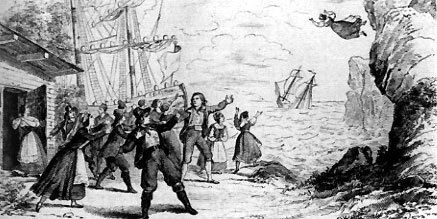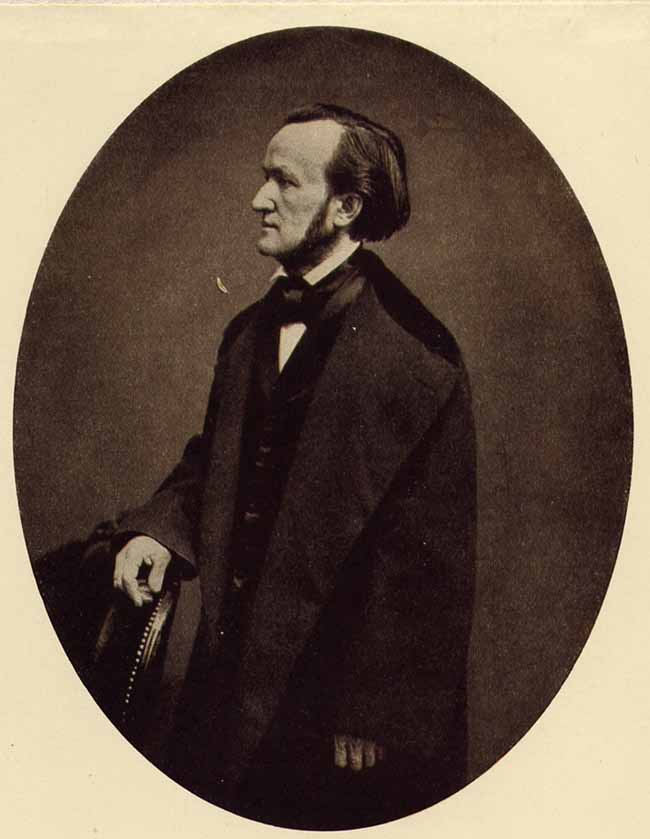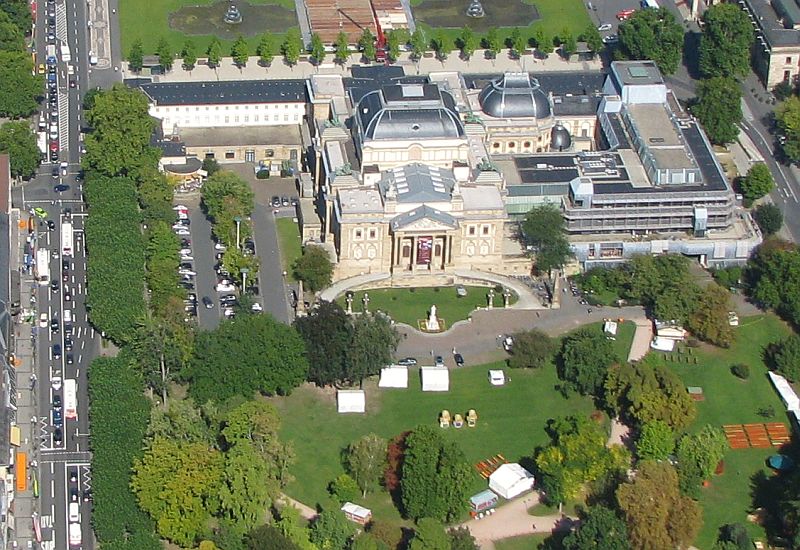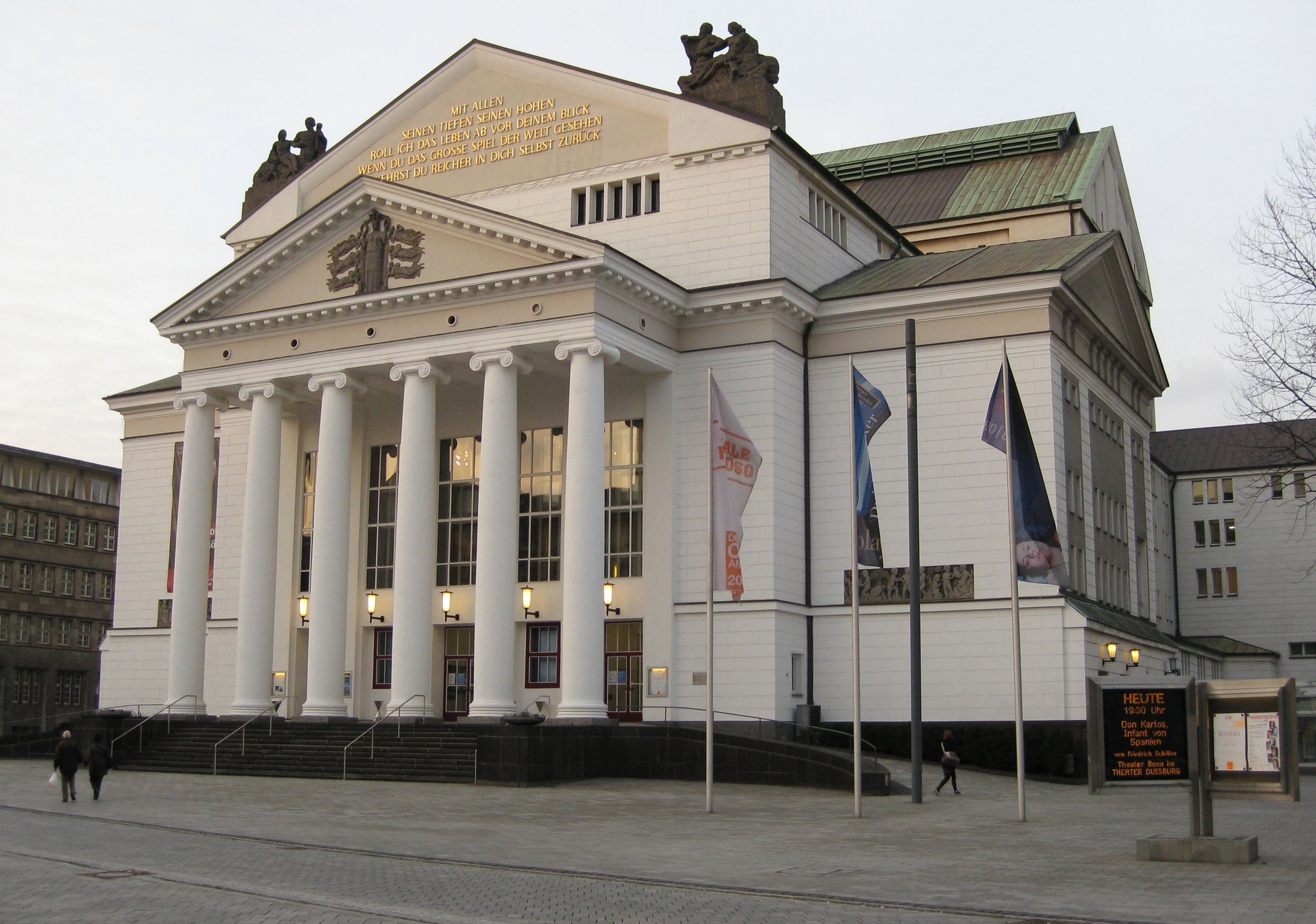|
Christian Sturm
Christian Sturm (born 18 January 1978 in Andernach, West Germany) is a German tenor. Life He began his training as a singer at the University of music and dramatic arts in Graz, Austria, before moving to the University of music and performing arts in Munich, studying firstly with Helmut Deutsch, Daphne Evangelatos, and Christian Gerhaher. His operatic début was as Acis in Handels '' Acis and Galatea'' on the steps of the Pergamon Altar in Berlin alongside Annette Dasch. He has sung in numerous productions at the Prinzregententheater and Staatstheater am Gärtnerplatz in Munich: Purcell's ''King Arthur'' (production: Claus Guth), Handel's ''Rodrigo'' – Giuliano – and Britten's ''A Midsummer Night's Dream'' – Lysander, Cavallis '' La Didone'' – Aeneas, and Belfiore in Mozart's Gärtnerin aus Liebe (production: Christian Pöppelreiter). As a freelance artist he has performed at the Nationaltheater Weimar, at the Nationaltheater Mannheim, at the Deutsche Oper am Rhein, and ... [...More Info...] [...Related Items...] OR: [Wikipedia] [Google] [Baidu] |
Andernach
Andernach () is a town in the district of Mayen-Koblenz, in Rhineland-Palatinate, Germany, of about 30,000 inhabitants. It is situated towards the end of the ''Neuwied basin'' on the left bank of the Rhine between the former tiny fishing village of Fornich in the north and the mouth of the small river Nette in the southeast, just north of Koblenz, with its five external town districts: Kell, Miesenheim, Eich, Namedy, and Bad Tönisstein. A few hundred metres downstream of Andernach the Rhine valley narrows from both sides forming the northern part of the romantic ''Middle Rhine'' stretch. Already in Roman times the place the narrow passage begins was named "Porta Antunnacensis" or ''Andernachian Gate''. It is formed by two hills, the ''Krahnenberg'' (engl. ''Crane hill'') and the ''Engwetter'' (''Narrow weather'') on the right bank near the wine village ''Leutesdorf'' (external town district of Bad Hönningen). The crane hill is named after the old crane beneath ... [...More Info...] [...Related Items...] OR: [Wikipedia] [Google] [Baidu] |
Aeneas
In Greco-Roman mythology, Aeneas (, ; from ) was a Trojan hero, the son of the Trojan prince Anchises and the Greek goddess Aphrodite (equivalent to the Roman Venus). His father was a first cousin of King Priam of Troy (both being grandsons of Ilus, founder of Troy), making Aeneas a second cousin to Priam's children (such as Hector and Paris). He is a minor character in Greek mythology and is mentioned in Homer's ''Iliad''. Aeneas receives full treatment in Roman mythology, most extensively in Virgil's ''Aeneid'', where he is cast as an ancestor of Romulus and Remus. He became the first true hero of Rome. Snorri Sturluson identifies him with the Norse god Vidarr of the Æsir.The Prose Edda of Snorri Sturlson Translated by Arthur Gilchrist Brodeur 916Prologue II at Internet Sacred Texts Archive. Accessed 11/14/17 Etymology Aeneas is the Romanization of the hero's original Greek name (''Aineías''). Aineías is first introduced in the ''Homeric Hymn to Aphrodite'' when ... [...More Info...] [...Related Items...] OR: [Wikipedia] [Google] [Baidu] |
Wuppertaler Bühnen
Wuppertaler Bühnen is the municipal theatre company in Wuppertal, North Rhine-Westphalia, Germany. It serves opera and plays. The opera house Opernhaus Wuppertal has served from 1956 as a venue for opera and performances of the separate dance company Tanztheater Wuppertal, founded by Pina Bausch. Plays have been performed at different locations, from 1966 to 2013 in the Schauspielhaus Wuppertal was a , a theatre for plays, in Wuppertal, North Rhine-Westphalia, Germany. The 745-seat municipal theatre is on next to the river Wupper in Elberfeld. Designed by , it was opened in 1966, run from 2001 by '' (''Wuppertal Stages'', municipal .... German opera companies Theatre companies in Germany Theatres in Wuppertal {{germany-theat-stub ... [...More Info...] [...Related Items...] OR: [Wikipedia] [Google] [Baidu] |
Erich Korngold
Erich Wolfgang Korngold (May 29, 1897November 29, 1957) was an Austrian-born American composer and conductor. A child prodigy, he became one of the most important and influential composers in Hollywood history. He was a noted pianist and composer of classical music, along with music for Hollywood films, and the first composer of international stature to write Hollywood scores., video, 9 min. When he was 11, his ballet ''Der Schneemann'' (The Snowman), became a sensation in Vienna, followed by his Second Piano Sonata, which he wrote at age 13, played throughout Europe by Artur Schnabel. His one-act operas '' Violanta'' and ''Der Ring des Polykrates'' were premiered in Munich in 1916, conducted by Bruno Walter. At 23, his opera ''Die tote Stadt'' (The Dead City) premiered in Hamburg and Cologne. In 1921 he conducted the Hamburg Opera. Kennedy, Michael. ''The Oxford Dictionary of Music'', Oxford Univ. Press (2013) p. 464 During the 1920s he re-orchestrated, re-arranged and nearly ... [...More Info...] [...Related Items...] OR: [Wikipedia] [Google] [Baidu] |
Johann Simon Mayr
Johann(es) Simon Mayr (also spelled Majer, Mayer, Maier), also known in Italian as Giovanni Simone Mayr or Simone Mayr (14 June 1763 – 2 December 1845), was a German composer. His music reflects the transition from the Classical to the Romantic musical era. He was an early inspiration to Rossini and taught and advocated for Donizetti. Life He was born in Mendorf near Altmannstein, Landkreis Eichstätt, Bavaria, and studied theology at the University of Ingolstadt, continuing his studies in Italy from 1787. He was closely associated with the Illuminati of Adam Weishaupt while a student in Ingolstadt, and the ideals of the French Enlightenment were a strong influence on his philosophy as a musician as corroborated by his famed ''Zibaldone'' or "Notebooks" compiled toward the end of his career. Shortly thereafter, he took music lessons with Carlo Lenzi, and later with Ferdinando Bertoni. He moved to Bergamo in 1802 and was appointed ''maestro di cappella'' at the Cath ... [...More Info...] [...Related Items...] OR: [Wikipedia] [Google] [Baidu] |
Agostino Steffani
Agostino Steffani (25 July 165412 February 1728) was an Italian ecclesiastic, diplomat and composer. Biography Steffani was born at Castelfranco Veneto on 25 July 1654. As a boy he was admitted as a chorister at San Marco, Venice. In 1667, the beauty of his voice attracted the attention of Count Georg Ignaz von Tattenbach, who took Steffani to Munich, where Steffani's education was completed at the expense of Ferdinand Maria, Prince-elector, Elector of Bavaria, who appointed him ''Churfürstlicher Kammer- und Hofmusikus'' and granted him a liberal salary. After receiving instruction from Johann Kaspar Kerll, in whose charge he lived, Steffani was sent in 1673 to study in Rome, where Ercole Bernabei was his master, and among other works he composed six motets, the original manuscripts of which are now in the Fitzwilliam Museum at Cambridge. On his return to Munich with Bernabei in 1674, Steffani published his first work, ''Psalmodia vespertina'', a part of which was reprinted ... [...More Info...] [...Related Items...] OR: [Wikipedia] [Google] [Baidu] |
Der Fliegende Holländer
' (''The Flying Dutchman''), WWV 63, is a German-language opera, with libretto and music by Richard Wagner. The central theme is redemption through love. Wagner conducted the premiere at the Königliches Hoftheater Dresden in 1843. Wagner claimed in his 1870 autobiography '' Mein Leben'' that he had been inspired to write the opera following a stormy sea crossing he made from Riga to London in July and August 1839. In his 1843 '' Autobiographic Sketch'', Wagner acknowledged he had taken the story from Heinrich Heine's retelling of the legend in his 1833 satirical novel ''The Memoirs of Mister von Schnabelewopski'' (''Aus den Memoiren des Herrn von Schnabelewopski''). This work shows early attempts at operatic styles that would characterise his later music dramas. In ''Der fliegende Holländer'' Wagner uses a number of leitmotifs (literally, "leading motifs") associated with the characters and themes. The leitmotifs are all introduced in the overture, which begins with a well- ... [...More Info...] [...Related Items...] OR: [Wikipedia] [Google] [Baidu] |
Tannhäuser (opera)
''Tannhäuser'' (; full title , "Tannhäuser and the Minnesängers' Contest at Wartburg") is an 1845 opera in three acts, with music and text by Richard Wagner ( WWV 70 in the catalogue of the composer's works). It is based on two German legends: Tannhäuser, the mythologized medieval German Minnesänger and poet, and the tale of the Wartburg Song Contest. The story centres on the struggle between sacred and profane love, as well as redemption through love, a theme running through most of Wagner's work. The opera remains a staple of major opera house repertoire in the 21st century. Composition history Sources The libretto of ''Tannhäuser'' combines mythological elements characteristic of German ''Romantische Oper'' (Romantic opera) and the medieval setting typical of many French Grand Operas. Wagner brings these two together by constructing a plot involving the 14th-century Minnesingers and the myth of Venus and her subterranean realm of Venusberg. Both the historical and the ... [...More Info...] [...Related Items...] OR: [Wikipedia] [Google] [Baidu] |
Parsifal
''Parsifal'' ( WWV 111) is an opera or a music drama in three acts by the German composer Richard Wagner and his last composition. Wagner's own libretto for the work is loosely based on the 13th-century Middle High German epic poem ''Parzival'' of the ''Minnesänger'' Wolfram von Eschenbach, recounting the story of the Arthurian knight Parzival (Percival) and his quest for the Holy Grail. Wagner conceived the work in April 1857, but did not finish it until 25 years later. In composing it he took advantage of the particular acoustics of his Bayreuth Festspielhaus. ''Parsifal'' was first produced at the second Bayreuth Festival in 1882. The Bayreuth Festival maintained a monopoly on ''Parsifal'' productions until 1903, when the opera was performed at the Metropolitan Opera in New York. Wagner described ''Parsifal'' not as an opera, but as (a festival play for the consecration of the stage). At Bayreuth a tradition has arisen that audiences do not applaud at the end of the first ... [...More Info...] [...Related Items...] OR: [Wikipedia] [Google] [Baidu] |
Tristan Und Isolde
''Tristan und Isolde'' (''Tristan and Isolde''), WWV 90, is an opera in three acts by Richard Wagner to a German libretto by the composer, based largely on the 12th-century romance Tristan and Iseult by Gottfried von Strassburg. It was composed between 1857 and 1859 and premiered at the Königliches Hoftheater und Nationaltheater in Munich on 10 June 1865 with Hans von Bülow conducting. Wagner referred to the work not as an opera, but called it "" (literally ''a drama'', ''a plot'', or ''an action''). Wagner's composition of ''Tristan und Isolde'' was inspired by the philosophy of Arthur Schopenhauer (particularly ''The World as Will and Representation''), as well as by Wagner's affair with Mathilde Wesendonck. Widely acknowledged as a pinnacle of the operatic repertoire, ''Tristan'' was notable for Wagner's unprecedented use of chromaticism, tonal ambiguity, orchestral colour, and harmonic suspension. The opera was enormously influential among Western classical com ... [...More Info...] [...Related Items...] OR: [Wikipedia] [Google] [Baidu] |
Hessisches Staatstheater Wiesbaden
The Hessisches Staatstheater Wiesbaden ('Hessian State Theatre Wiesbaden') is a German theatre located in Wiesbaden, in the German state Hesse. The company produces operas, plays, ballets, musicals and concerts on four stages. Known also as the Staatstheater Wiesbaden or ''Theater Wiesbaden'', its orchestra is the Hessisches Staatsorchester. The building was inaugurated in 1894. The theatre is the host for the annual festival Internationale Maifestspiele Wiesbaden, established in 1896 after the Bayreuth Festival. History The building of the theatre was initiated and substantially supported by the German emperor William II who regularly visited the spa in Wiesbaden. A team of architects from Vienna, Ferdinand Fellner and Hermann Helmer, won the competition. They constructed the building from 1892 to 1894 in Baroque Revival style, following models in Prague and Zurich. The inauguration was on 16 October 1894 in the presence of the emperor. The Foyer was built in 1902 by archi ... [...More Info...] [...Related Items...] OR: [Wikipedia] [Google] [Baidu] |
Deutsche Oper Am Rhein
The Deutsche Oper am Rhein (German Opera on the Rhine) is an opera company based in Düsseldorf and Duisburg. The opera also has an associated classical ballet company. Axel Kober has been its Music Director since 2009. The resident orchestra, the Düsseldorfer Symphoniker, play both opera and symphonic repertoire. After the 1875 construction of what became the Düsseldorf ''Opernhaus'', a strong connection between the two cities’ opera houses existed from 1887 to 1920, and was not re-established until 1955 with the creation of the Deutsche Oper am Rhein. The company performs in the Opernhaus Düsseldorf, built in 1875. It was partially destroyed during World War II, and reconstructed to officially re-open in 1956. Theater Duisburg, built in 1912, was destroyed, and rebuilt in 1950. For the 25th anniversary of the house, Alexander Goehr was commissioned to compose an opera. He wrote '' Behold the Sun'' with a libretto by John McGrath about the anabaptists in Münster. The ... [...More Info...] [...Related Items...] OR: [Wikipedia] [Google] [Baidu] |







